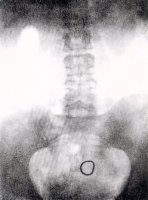|
Contraception
|
|
A Complex Issue
|
|
Historical Notes: Intra-Uterine Devices (IUDs)
|
|
|
|
|
|
Ernst Gräfenberg
(1881-1957)
|
|
|
|
|
Ancient Egyptian camel drivers already knew that a pebble inserted in the uterus of a camel prevented it from becoming pregnant. This was important knowledge for caravans travelling through the desert, often for weeks and months at a time. In the early 20th century, however, gynecologists interested in contraception began to experiment with new devices which, inserted into a woman's uterus, would prevent unwanted human pregnancies. One of the first of these intra-uterine devices (IUDs) was the "Gräfenberg ring", made of coiled silver wire and named after its inventor, the German gynecologist Ernst Gräfenberg. In contrast to other models, the Gräfenberg ring was remarkably safe and did not lead to pelvic inflammation. However, it met with great resistance on the part of many physicians and this restricted its general acceptance. Finally, in the 1960's, it was replaced by the other IUDs more familiar today. |
|
|

|

|

|
|
From the left: Top: Device for inserting the Gräfenberg-ring, three samples of the ring, X-ray showing position of inserted ring
|
|
|
|
When Gräfenberg was later persecuted by the Nazi régime, Margaret Sanger helped him to escape to the US where he had a successful private practice and eventually also became known as the discoverer of the Gräfenberg spot (G-spot).
|